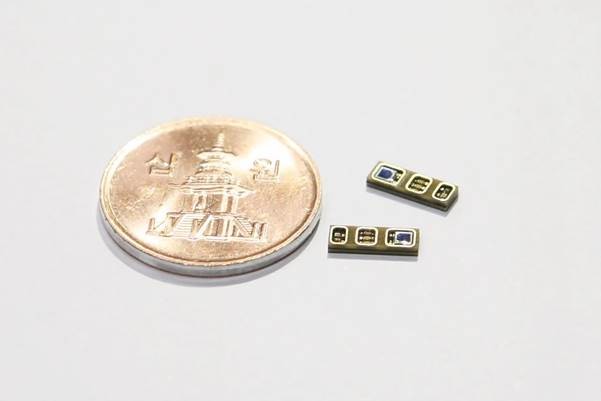LG Innotek is one of the largest company which make components for wearable and smartphones. Company unveils their new “ultra slim” bio sensor module for wearables that measures in at just 1mm thick in Seoul, korea.

”The key to wearable technology is reducing the size of the device and minimizing power consumption. No matter how excellent device’s feature is, if a wearable device is bulky and the battery wears out rapidly, it is difficult to popularize”.
This sensor is based on the PCB technology. LG Innotek new bio sensor comes with more accuracy of the measuring information. This new sensor module’s range of error for measured data is ±5 bpm during exercise and even in stable condition, it can measure data within an error range of ±2 bpm which is comparable to that of medical devices.
Also Read:
- Samsung And LG Reveals New Battery Technology For Wearables
- Snapdragon Wear 2100 Chip will allow thinner smartwatches and Better Battery…
- Samsung Patents a Smartwatch based vein-scanning Technology
Press Release:
LG Innotek Develops Ultra Slim Optical Bio Sensor Module
Smaller, more efficient, and more accurate with the latest technology
Seoul, Korea, Feb 16th, 2016 – LG Innotek, a leading global components and materials manufacturer, announced the development of an ultra slim optical bio sensor module with the world class level of performance,
The optical bio sensor module is mainly adopted wearable devices and smartphones to measure heart rates, stress indices, and oxygen saturation levels.
This newly developed module has lower power consumption and measures data with higher accuracy than the existing products. Users can receive more accurate biometric information with smaller devices.
The key to wearable technology is reducing the size of the device and minimizing power consumption. No matter how excellent device’s feature is, if a wearable device is bulky and the battery wears out rapidly, it is difficult to popularize.
With a thickness of just 1 mm(0.04inches), this module includes a Photo Diode(PD), 5 LEDs, and Integrated Circuit(IC). Thinner sensors allow wearable devices and smartphones to become thinner, and a more free design is implemented.
To minimize the thickness of the module, LG Innotek utilized their advanced embedded PCB technology. The technology embeds integrated circuits into the PCBs. The Former modules were manufactured by mounting the IC on the PCB and then seating the photo diode on top of it. This approach has its limits when it comes to reducing the thickness.
The module consumes less power with ultra-slim thickness. The inside is gold-plated to maximize luminance efficiency by minimizing the amount of LED light that is absorbed. With this module, the strength of the biometric signals increases by about 30%, so you can use low power to accurately detect biometric signals. Battery consumption has been reduced by 20% compared to the existing module.
The accuracy of the measured information has also been improved. This new sensor module’s range of error for measured data is ±5 bpm during exercise and even in stable condition, it can measure data within an error range of ±2 bpm which is comparable to that of medical devices.
When the user measures their heart rates using a wearable device, the existing module’s range of error while exercising is ±8 bpm (beats per minute). If the user’s heart rate is actually 120 bpm, the heart rate readings measured by the wearable device will be between 112 and 128 bpm. This module increased its accuracy up to 115~125 bpm.
The LG Innotek sensor module was developed by converging differentiated technologies such embedded PCBs and LEDs.
The company combined its technologies, expanded business areas, and strengthened its portfolio by discovering new growth engines.
“The core part of IoT (Internet of Things) is the sensor that enables information sharing. We will develop high-tech sensors and use them in automobiles, consumer electronics, wearable devices, and other things to lead the IoT industry,” said Changhwan Kim, Executive Director of the Components and Materials R&D Center.
